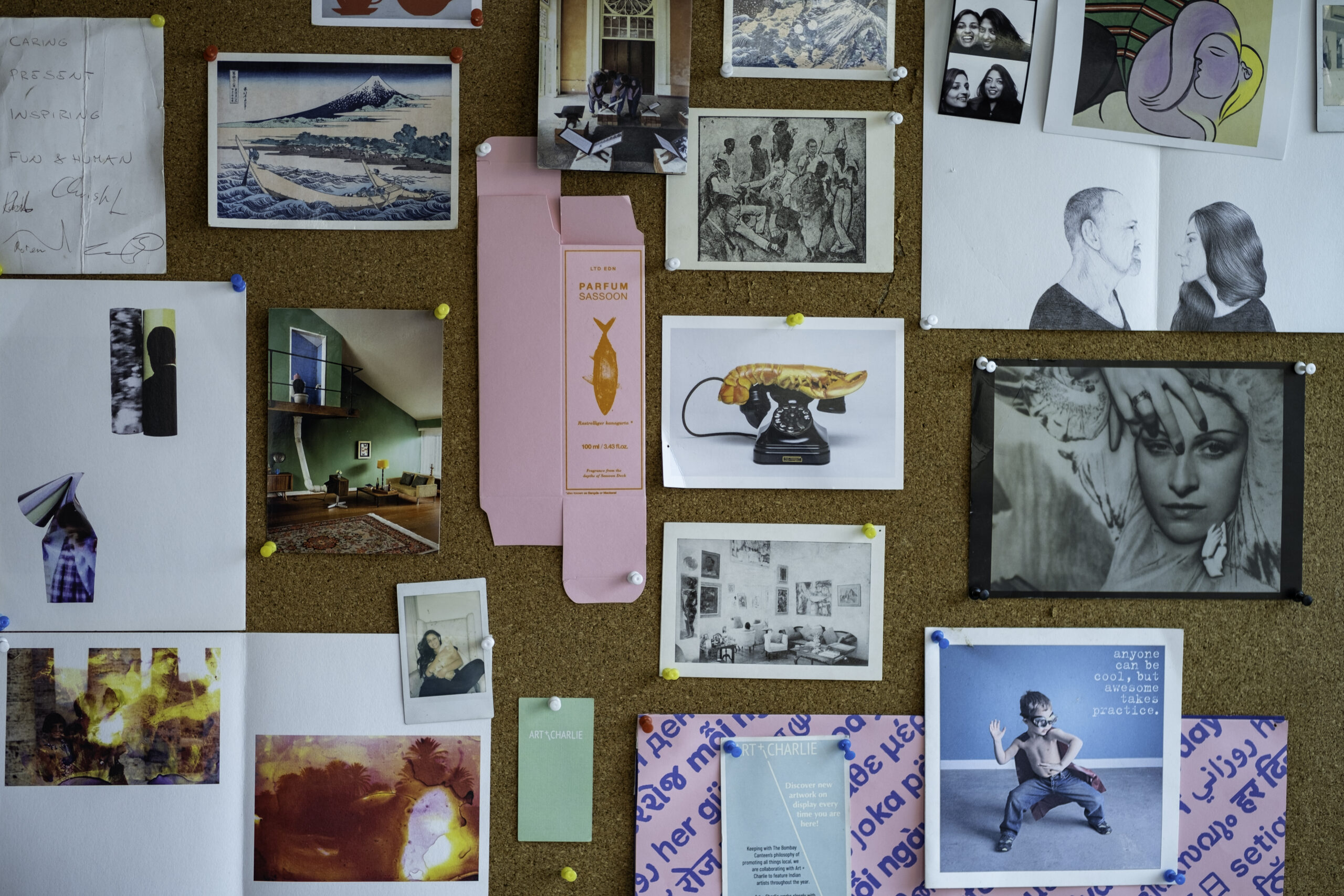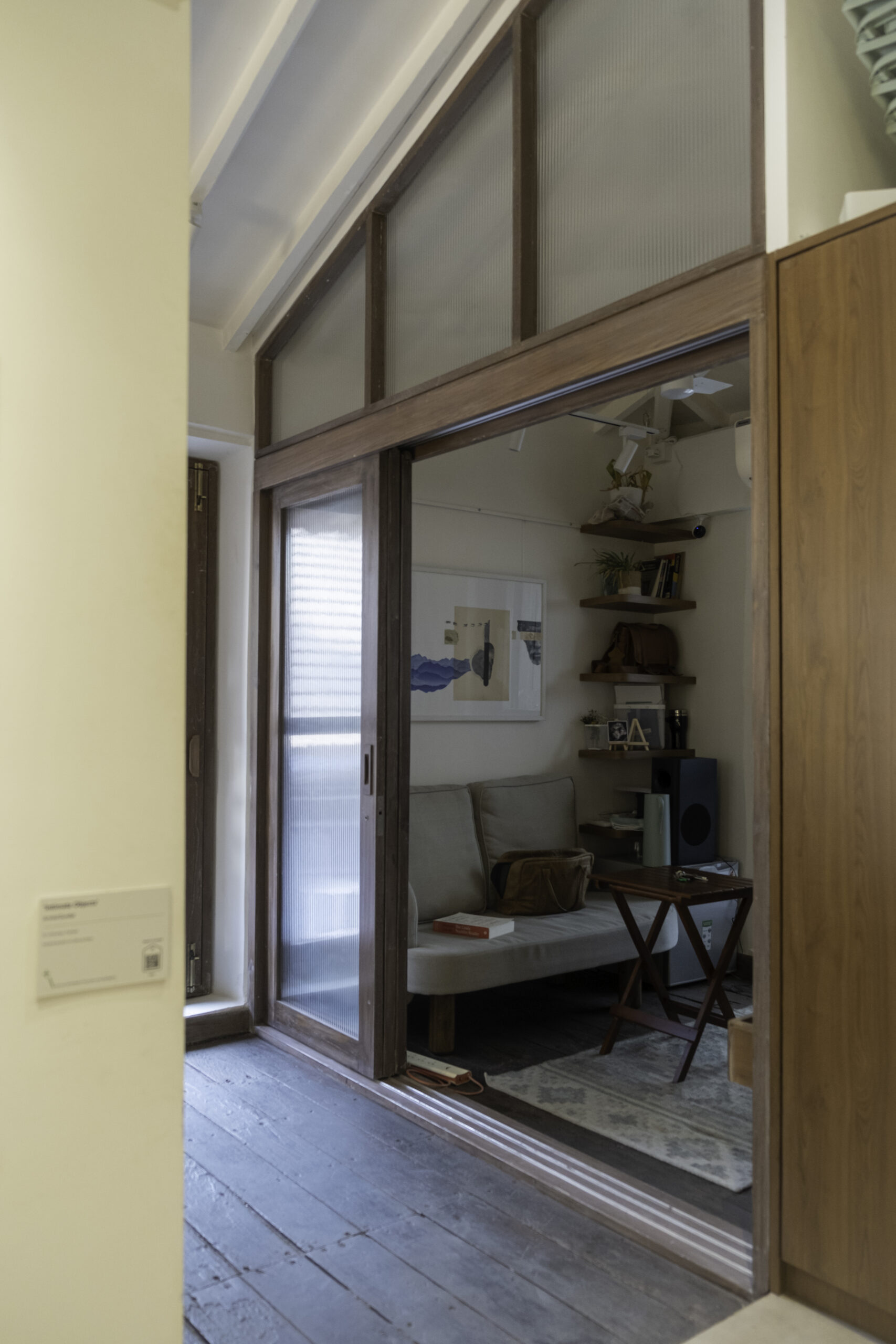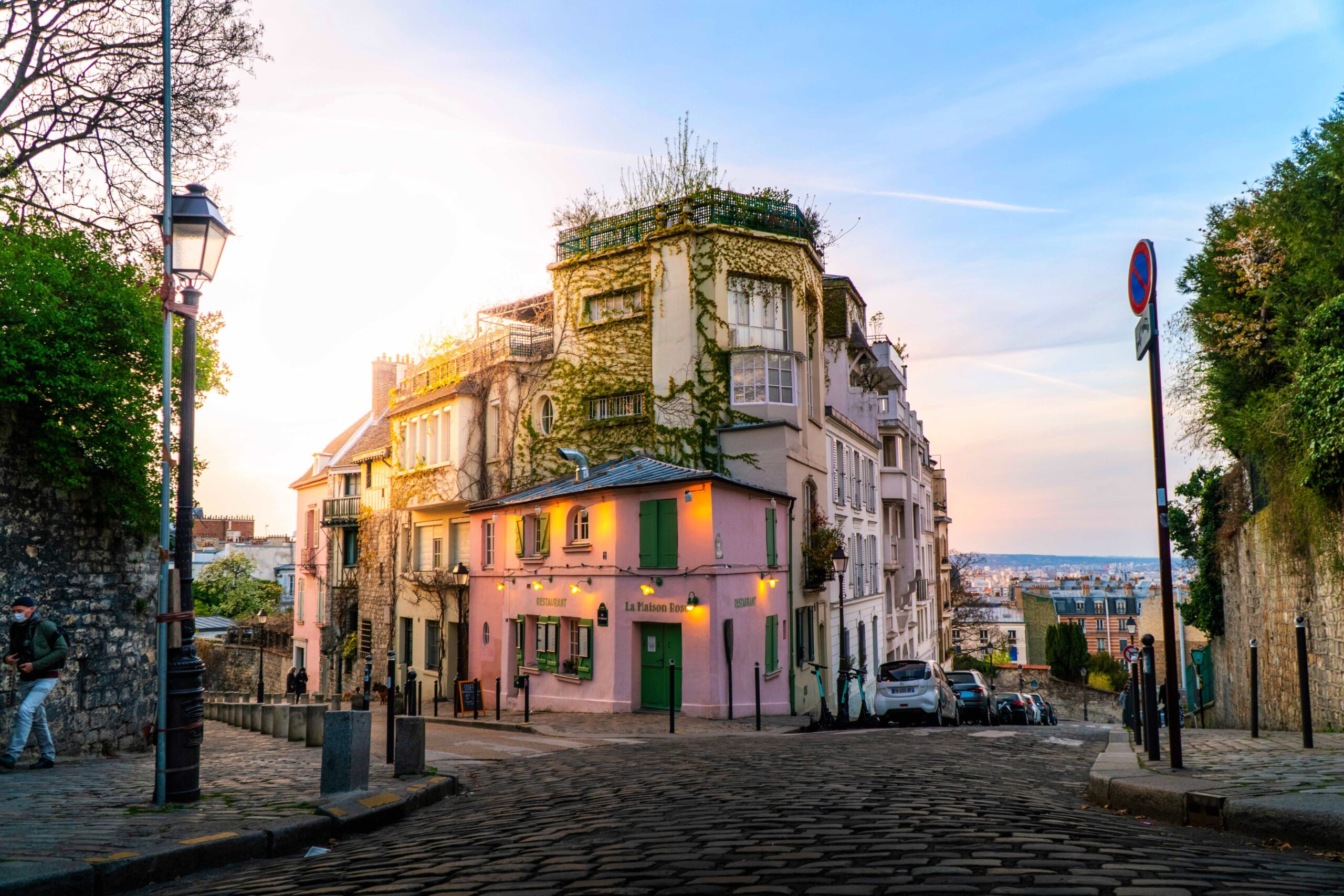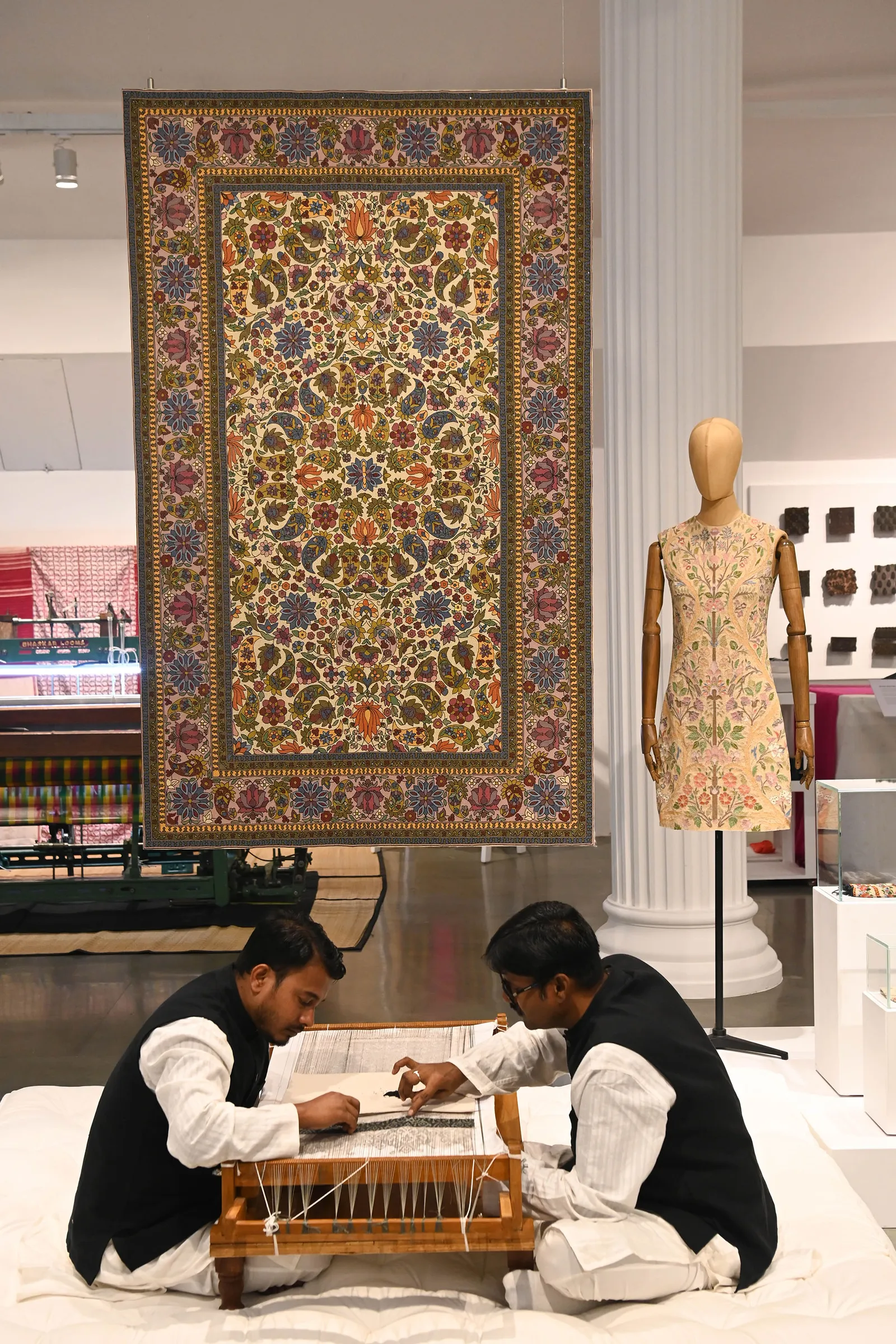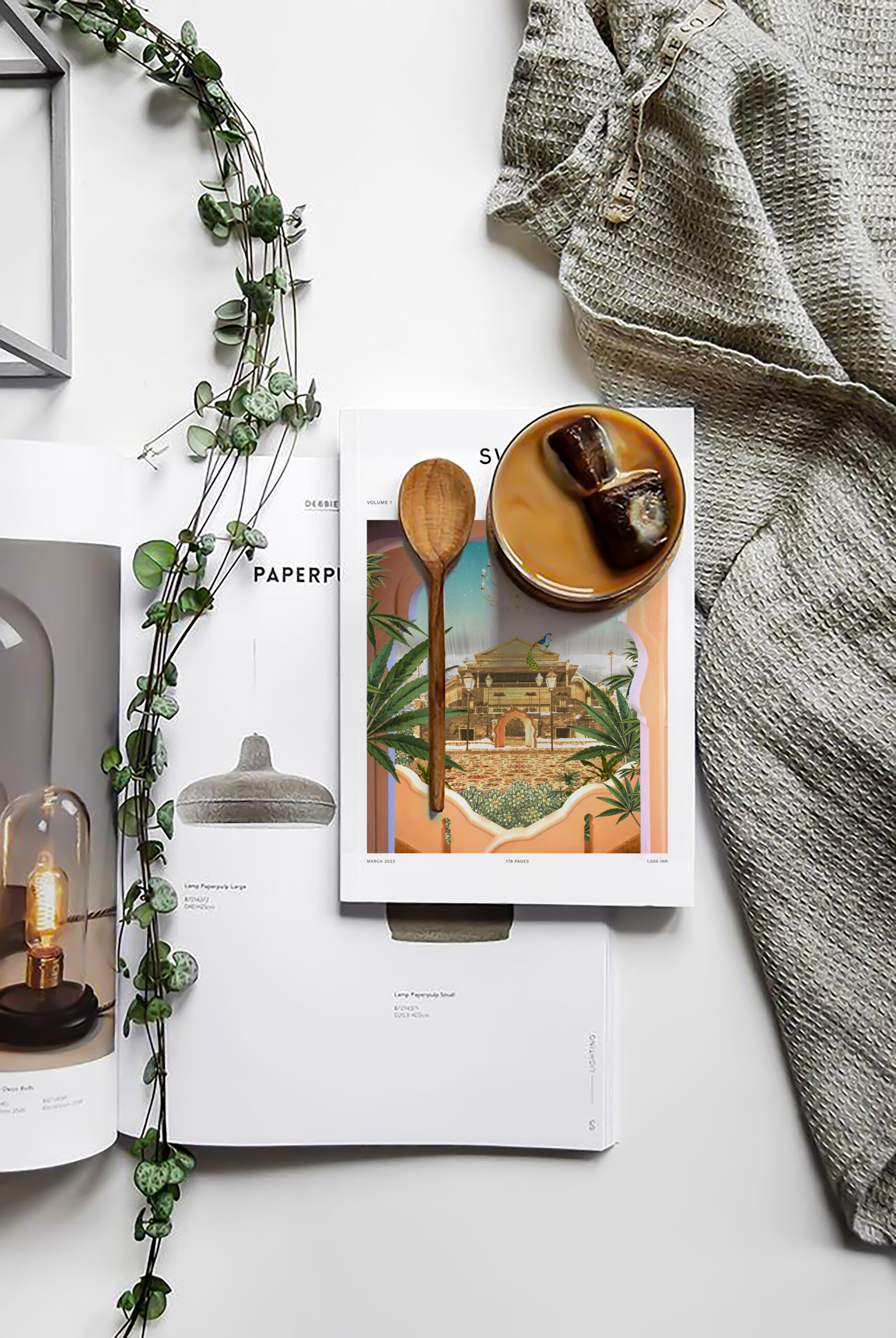It’s safe to say Ayesha Parikh, curator and gallerist, Art and Charlie, has lived dual lives. While one was neck-deep in analytics, structure and numbers, the other has been a fluid blend between art and history. Parikh lived in London for 10 years working in one of the “Big 3” – McKinsey, leading many projects for the company across Europe. She travelled extensively during her role, visiting different countries – setting up various projects for the firm. Yet, in her free time, she found herself drawn to art shows, galleries and museums. Whether it was the Museum of Old and New Art in Tasmania or the Tate Modern in London, she was constantly drawn to the artistic realm of things, during her time off from consulting.
Ayesha Parikh in her office at Art+Charlie.
“This was how I spent my evenings, post work,” she smiles as she talks to me about her life’s journey which has been entrenched with an almost infectious passion for the arts. “Even between jobs, I’d request for some more downtime as I’d take up courses in arts business,” she tells me. Her time in the UK and at Sotheby’s Institute of Art diversified her horizons to the world of visual arts. She met and interacted with similar individuals who’d left their “secure jobs” to pursue a career in arts.
On being asked about her preferences in the art world, she chuckles and tells me, “I love art that messes with your mind.” Speaking of the times when she visited Tate Modern in London and awed the mind-bending works of Damien Herst. “Sometimes I have my own interactions with art; I’ve even burst out laughing looking at a work and understanding it. Art speaks to you in ways you can’t imagine.”
The love for art isn’t coincidental. Yet, it’s been rather serendipitous for her, as fate had her way to set up a path that led her to Art and Charlie, a culture house that she owns and operates in the bylanes of Bandra.
The facade of Art+Charlie.
Ayesha grew up in Ahmedabad, and while she comes from a Gujarati-business family that always put business first, there were subtle ways in which art was inherently part of her early life. Her father, a first generation businessman, is also an Urdu poet who reads and writes poetry in his free time, along with being a tabla player. Her mother is a classical dancer. I see the inner child in Ayesha emerge as she speaks to me about her childhood in Ahmedabad, where culture and theatre prevailed in most of the outings of the Parikh household.
Evenings would be spent at the Darwin amphitheatre, and theatre, history and art were always the talk of the house. Niranjan Bhagat, an award-winning Gujarati poet or sahib, as she fondly calls him, was a dear friend of the family and a regular visitor to their home. Fridays would be dedicated to drinks, dinner and conversation on history and politics with the legendary poet.
Ayesha at Art+Charlie.
An upbringing that’s so connected to culture and history finds itself unveiling in some way or another in a person. With Ayesha, choosing economics and maths was the obvious choice. Straight As and impressive grades were the norm, and choosing a career in consulting was a no-brainer to young Parikh, who found herself acing job interviews and appraisals.
Yet, there was a constant pull, an aching draw that kept calling her back to the child in her; the one whose eyes lit up every time Niranjan Bhagat came home, or when her dad would book tickets of the latest play in town.
Interestingly, the foundation of the culture house Art & Charlie was no overnight and impulsive decision. Her Gujarati roots and analytical mindset pushed her to painstakingly lay down every detail of Art & Charlie. Her father and her deeply studied markets, made SWOT analysis and deeply understood the art industry in Mumbai. She had a vision board in mind for Art & Charlie and she achieved that to the T with this culture house that finds itself in a bungalow in Pali Village, just as she had imagined it.
Interior details of Art+Charlie.
Quotes of Alice and Wonderland find themselves inscribed at her gallery. Designed as a culture house rather than just a gallery, Parikh wants this space to be for creators who she appreciates. “Isn’t all curation about the minds of the curators rather than just their artworks?,” she says.
“I’m the happiest I have ever been. For me, this is my ikigai and my calling. Even when it comes to curating shows and doing pop-ups at various galleries, my passion for this space takes precedence over a sheer business decision. Creating a space for artists is like coming back home for me, life has come full circle” she beams.
Words by Akanksha Maker.
Photographs by Omkar Khandagale.
